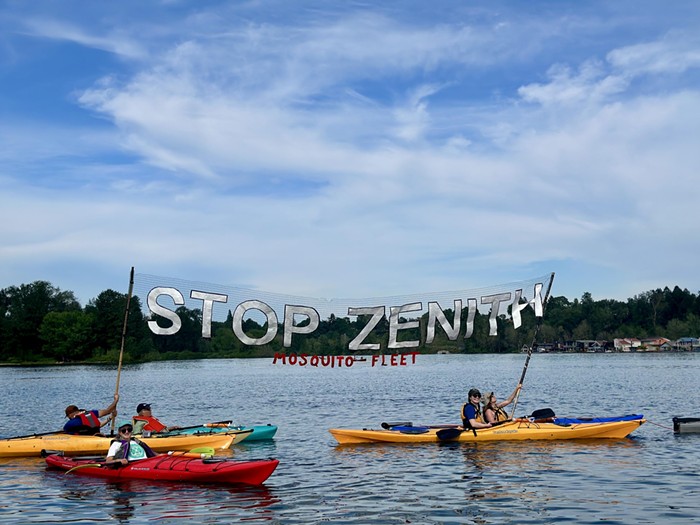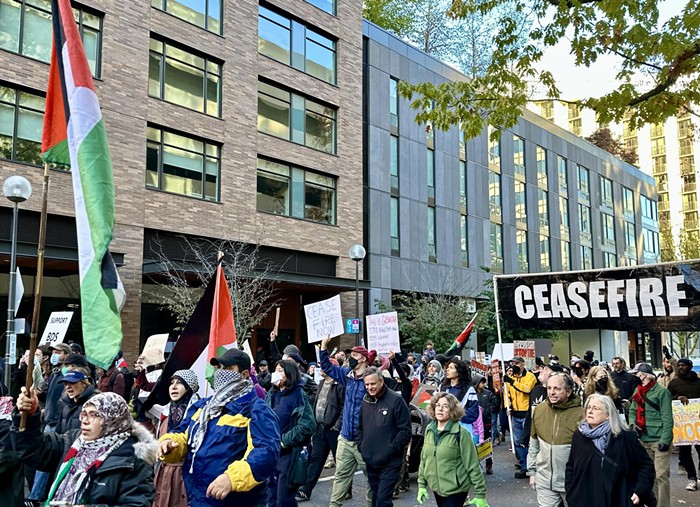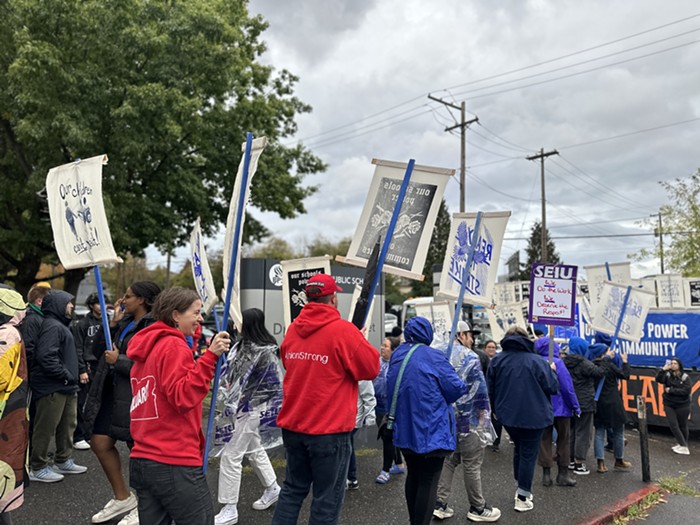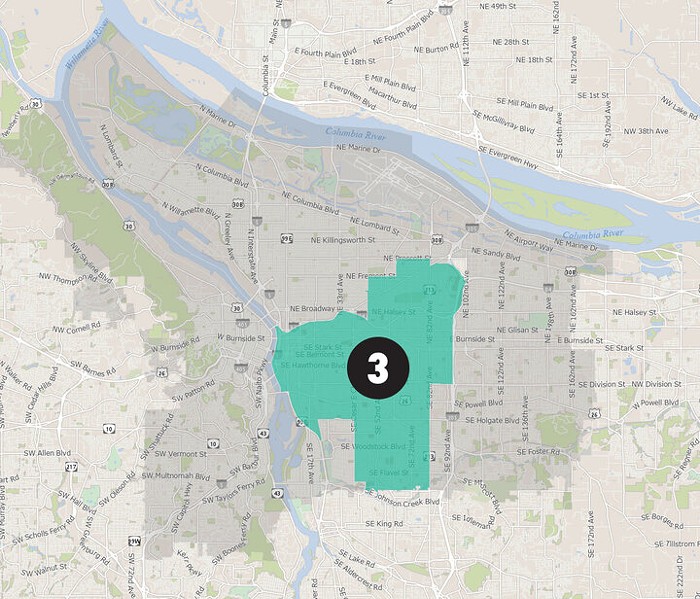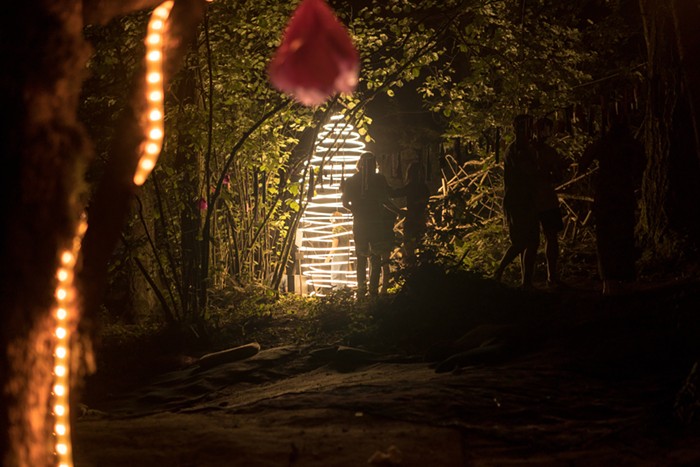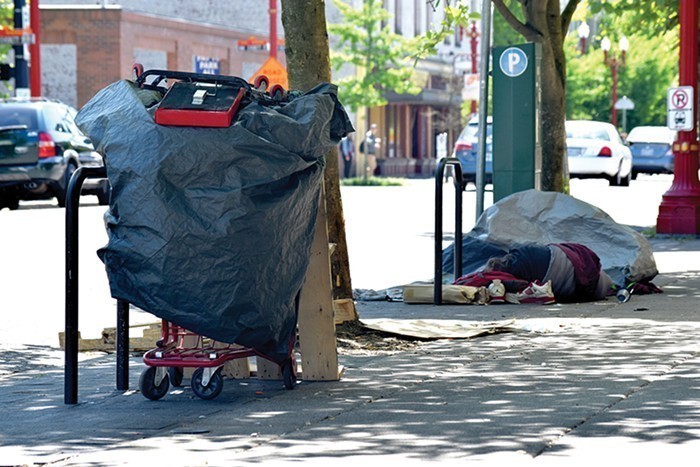
As Metro Council begins refining the project list for a major transportation funding package, it seems that two projects in particular might do more to appease drivers, rather than to reduce greenhouse gas emissions.
This November, Metro area voters in Multnomah, Clackamas, and Washington counties will vote on the multi-billion-dollar funding measure, which aims to make the area’s transportation system greener, safer, and more equitable. Metro’s transportation funding task force released a detailed list of potential projects earlier this month, and it’s now up to Metro Council to evaluate and edit the list before referring the measure to the ballot in May.
While most of the projects on the list have a broad range of support, two items are drawing the ire of progressive transportation advocates. That includes Kari Schlosshauer, one of the leaders of Getting There Together, a coalition of over 60 organizations working to improve transportation in the area.
“We’re excited about the package overall,” Schlosshauer told the Mercury. “But two projects have really risen to the top of the list as ones we need more information on, or that don’t clearly meet the values of this measure or our coalition.”
Induced demand or transit-friendly?
One of those projects is a series of improvements and a new road addition on a route that connects Happy Valley to Gresham along 181st Ave. Dubbed Clackamas to Columbia (C2C for short), the new project is being sold as a way to streamline traffic through the area, and make commuting easier for the growing number of people who live and work in the area. Metro would provide $150 million for the project.

Speaking at a Metro Council meeting on Monday evening, Happy Valley Council President Brett Sherman said the C2C project would fit well with Happy Valley’s plan to add more dense affordable housing along the route.
“Without improvements to the C2C, it will be extremely difficult to provide transportation options for those more affordable areas,” Sherman told the Metro Council.
But Getting There Together members worry the project would invite induced demand—a demonstrated phenomenon that shows that as more car lanes are built in an area, more cars quickly come in to fill the new space, eliminating any meaningful improvements to congestion or reduced carbon emissions. The coalition warns that a new road could invite thousands of new cars to the area each day.
Notably, the new C2C road was the only project on the list to not receive support from at least 75 percent of Metro task force members—meaning it couldn’t be included as an officially endorsed suggestion to Metro Council.
Schlosshauer said that C2C could turn out to be a positive project in that it would create a more direct route, cutting down on total vehicle miles traveled by drivers passing through the area. And improved roadways could also make it easier for TriMet to increase its service in the area.
“But the induced demand element is still a real concern for me,” she added. “Without more detail, it’s been hard to judge it.”
Fly Drive PDX
Another project Schlosshauer wants more detail on is a plan to add an overpass at NE 82nd and Airport Way, an intersection often clogged with traffic going to and from the Portland International Airport. Metro would chip in $35 million for this project, while Port of Portland would cover the rest of the $87 million price tag.
In addition to concerns about induced demand, Schlosshauer worries the project, which would cater almost exclusively to cars, is counter to the direction Portland’s transportation system should be going in.
“Not only is it making driving easier, but it’s also sending that message, ‘If you want to work here, if you want to live here, you have to have a car,’” she said. “I don’t think that’s the message we want to be sending in 2020.”
Schlosshauer added that investing in more transit infrastructure in the area —a MAX train overpass, for example, or allowing TriMet bus routes to make stops at the airport arrivals area—would be a smarter way to reduce traffic. She also said it would likely be more helpful for the 10,000 people who work at PDX, many of them low-wage workers who might struggle to afford a car.
Metro Council will likely need to formally approve the project list in April, meaning there’s still time to tweak, remove, or add projects.
One of Metro’s stated goals for the measure is that it will make the area’s transportation options more equitable along racial and economic lines. Kayse Jama, the executive director of racial justice organization Unite Oregon, said at Monday’s meeting that the project list overall is “going in the right direction.” But, like many other public commenters from organizations like Sunrise PDX, Jama signaled out the Airport Way and C2C projects as problematic.
“We have concerns around Airport Way and C2C,” Jama said. “We believe in investment around public transportation and safety, rather than expanding roads.”


